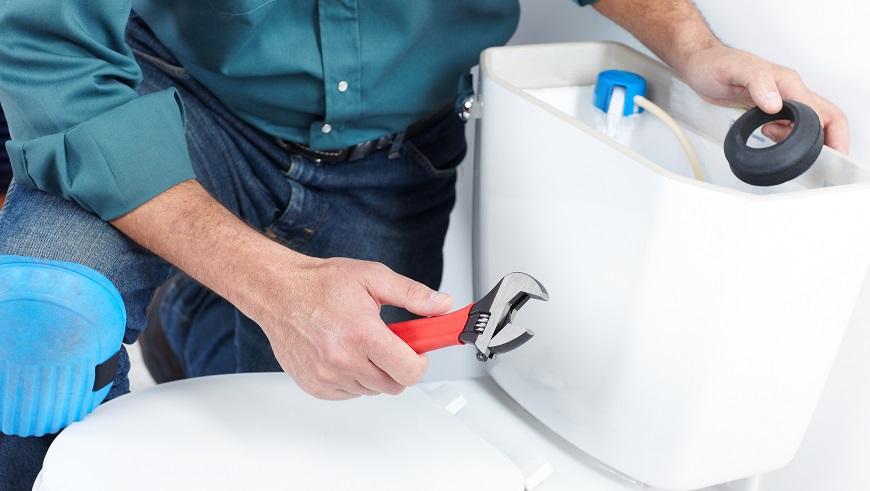Cost to Replace a Toilet
Last updated 16th February, 2024
Do you want to know the cost of replacing a toilet?
This article discusses all you need to know about toilet installation. We cover toilet prices, supply costs, labour fees, timeframes and much more! On average you can expect to pay around £500.
Keep reading for more information!

How Much to Install a Toilet?
Noisy and leaking plumbing is not something anyone should have to live with. Whether you're dealing with a broken toilet that needs replacing or you simply would like to have a modern toilet that is technically and visually up to date, like most DIY projects, the cost of replacing a toilet depends on various factors.
This includes the materials or products required, the cost of labour and the type of toilet you would like to install.
Toilet Prices
The average price you should pay for a plumber to fit a toilet is in the range of £180-£700 depending upon your preferred toilet choice and whether any pipework is needed.
Most plumbers usually charge around £100-£300 per job depending on the pipework needed. To reduce costs, you can also opt to dispose of your old toilet yourself as disposal prices have increased.
The main variation in price is going to be the quality of the toilet that you choose to have fitted. To lower your overall costs you can explore budget toilet options. You may be able to get a better price through a tradesman as they will have access to trade discounts from suppliers.
Below we have estimated the costs of hiring a plumber to replace your toilet:
| Description | Avg. Cost | Duration |
|---|---|---|
| Installing a toilet with no pipework needed. | £180-£550 | 2-4 hours |
| Installing a toilet with additional pipework and repacement valves. | £270-£750 | 3-6 hours |
Cost Breakdown Calculator For Replacing a Toilet and Additional Pipework
Individual costs of replacing the average toilet and additional pipework required - Total Cost: £500
Materials
£250
Tradesmen
£200
Waste Removal
£50
What Replacing Your Toilet Entails
If you are planning to have your old or defective toilet replaced, it is not just about choosing from a large number of new toilet models available, but also about installing the new toilet professionally. Wall thickness, mounting height and the correct connections of the inlet and outlet pipes play a decisive role.
Although the replacement of a toilet is quite possible to accomplish alone, as soon as structural changes are necessary, such as moving the drain or reinforcing a brick wall for subsequent wall mounting, it is advisable to contact a professional for installation.
While getting your toilet fitted, you may find that you need to employ additional tradesmen to decorate, retile or re-grout your current tiles in the bathroom.
If you have opted to replace a toilet yourself and you are dealing with a broken toilet, good preparation is more than half the battle for a DIY job. You will have to prepare the required material and tools in advance so you can get started right away, otherwise it could take a lifetime to finish, especially if the correct skills are not in place.
Also note that you might require a plumber as toilet replacement jobs often run the risk of low water pressure, constant water running in the toilet and blockages. Pipework is also an issue as some toilet pipes also connect with the sink pipes which can lead to slow-drainage problems. In such cases, a plumber who specialises in bathrooms and drainage will be able to help.
Installing a Toilet Yourself
There are several other factors to consider when replacing a toilet by yourself. For example, it's vital to first consider what type of toilet you should buy. When it comes to choosing a toilet bowl, initially there are two different toilet models to choose from: the standing WC and the wall-hung WC or hanging WC.
However, be aware that regardless of your preferred toilet model, the existing connection plays a role in your choice. Therefore, you should be well advised so that you can understand the costs and can estimate which variant makes more sense to you.
In many new models, the toilet is usually mounted directly on the wall and the cistern stays hidden in the wall. Although you can attach these new models to most walls, it is important to first test the walls in your house to see if they will hold a toilet - this will help prevent damage to the wall, drains and the toilet itself.
If you are not sure how to test it, be sure to contact a specialist. They will first ensure that your current home can support this new toilet system. However, if you prefer to undertake the job yourself, you should have enough knowledge about the installation of toilets so that you can assemble a toilet without any major problems occurring afterwards.
Tips to Installing a New Toilet
Before you install your new toilet, the old one must first be removed. The following should be noted when replacing a toilet:
- The main water tap must be turned off and the cistern of the old toilet drained.
- Once the water supply to the cistern is removed, the old toilet bowl can be unscrewed together with the connecting pipes and the cistern.
- Check that the wall is stable enough for the toilet to be connected. If there are cracks in the wall, there is a risk of the toilet bowl tearing out. If necessary, reinforce the wall with plasterboard and chipboard.
- Before installing your new toilet, make sure that the toilet tubes fit the inlet and outlet connections and the junctions are well sealed. If this is not the case, it is possible for wastewater to quickly escape through the pipes and damage your property.
- If you are installing a hanging toilet, determine the mounting height of the WC bowl. The average height of the upper edge is 40 centimetres.
- When connecting a hanging toilet, slide the toilet bowl over the threaded rods and tighten the nuts. Make sure that you do not pull them too tight, otherwise, the ceramic can crack or jump!
Risks When Replacing a Toilet
Replacing a toilet might seem very easy until something goes wrong or when additional materials are required. Although many people shy away from hiring an expert due to the costs, a DIY job might cost even more when things fail to go according to plan. No doubt, with any DIY job that involves handling pipes, it's only normal for unexpected costs to occur.
For example, if replaced incorrectly a leakage can occur which can end up being extremely expensive and messy to repair. Even minor damage to pipes, toilet bowl or seals due to incorrect installation or improper handling of the individual parts can lead to serious consequences such as water damage to the wall and masonry.
A toilet replacement job might also run the risk of additional materials being needed for completion. Although a simple toilet varies in price between £30 and £100, for a cistern toilet, you are looking at a cost of between £100 to £300.
And if a new inflow and outflow are necessary, you should expect to pay up to £30 for a quality pipe. Pre-wall mounting models are more expensive and under certain circumstances, additional costs for tiles may be needed.
FAQs
If in doubt, a specialist can advise you on the choice of a suitable toilet and can also install it. However, expect an additional £100-£300 for labour costs.
In addition to a detailed consultation in the choice of your new toilet, the expert can ensure a smooth replacement of the toilet bowl, cistern and pipework. They can also take away your old toilet, so you do not have to worry about disposal. Also, problems like a leaky or clogged toilet can be solved efficiently without the risk of any consequential damage.
If, on the other hand, you decided to convert to a stand-alone toilet, you would have a hard time installing the drainpipe, which is usually routed through the floor. In addition, a wall-mounted toilet is easier to clean, as dirt and dust underneath the toilet bowl can be easily wiped off. The flexible height adjustment during installation also makes the wall-mounted toilet an ideal sanitary device for old and physically impaired people.










